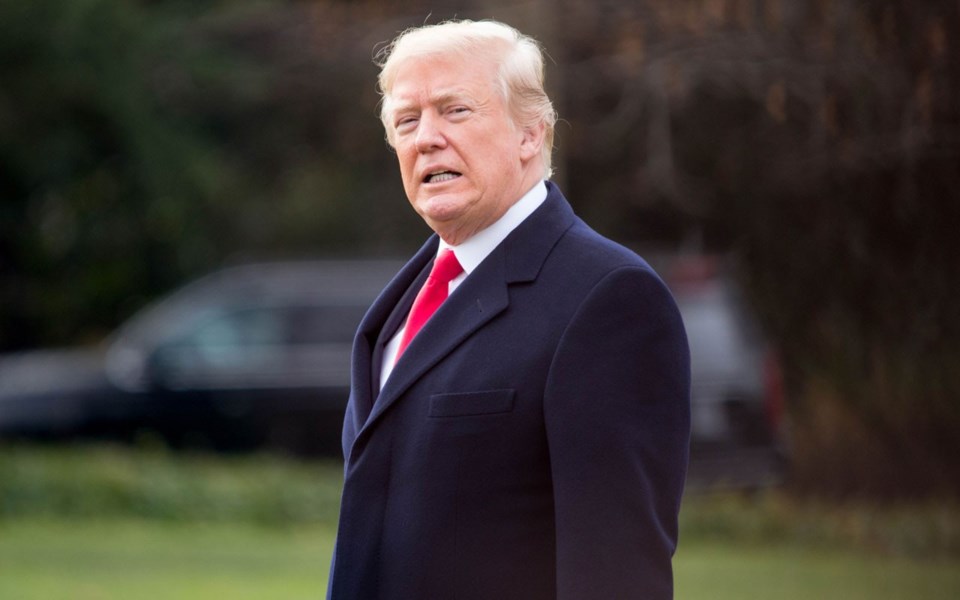When U.S. President Donald Trump was elected, many in the global tourism sector shuddered.
When he started his rampage on travel bans for nationals from majority-Muslim countries from entering the United States, the reaction was swift. Here in Canada, school boards stopped trips to the U.S. Girl Guides, writers, academics and more cancelled travel plans and called for others to boycott Trump's America as a destination.
But underlying the concern was also a simmering hope that what has come to be known as the "Trump slump" in the U.S. could be the "Trump bump" here in Canada.
Would travellers change their plans and come here instead of heading to the U.S.? Would Canadians stay home and vacation?
Well, while disturbing recent travel stats from the U.S. Travel Association show that the drop in international arrivals to U.S. destinations translated to $4.6 billion in lost spending and 40,000 jobs in November 2017, compared with the year before, the number of Canadians heading south has gone up!
Overnight trips from Canada rose 4.8 per cent to 20.2 million in 2017, reversing a three-year decline, according to Statistics Canada.
But, of course, when it comes to looking at travel trends, there is never really a straight line that can be drawn as cause and effect.
For example, according to last month's Conference Board of Canada's Travel Market Report, despite higher gas prices impacting the U.S. drive market to Canada, overnight visits by Americans are forecasted to rise 3.4 per cent this year.
International visits from other markets will rise faster, though (6.7 per cent), with the highest growth coming from Mexico and China (We know that Mexicans are choosing Canada after being horrified by Trump's "Build a Wall" campaign and more).
Vancouver is expected to have the strongest growth in overnight visits this year at 4.3 per cent, welcoming eight million tourists—let's hope some take the time to visit Whistler.
(No!!! I can hear readers exclaim. But let's not forget we are a tourist destination and we need steady visitation to support all the businesses that rely on this sector.)
Another recent report, "Top 100 City Destination Ranking" by market research provider Euromonitor, suggested that Canada stood to gain much from President Trump's controversial administration when it comes to tourism. Last year, it said that New York City revised its forecast for international tourism arrivals down 300,000 visitors from its original figures.
"Canada is also likely benefiting from some substitution effect, as its current political vision is the near-opposite of its southern neighbor, advocating openness and stronger ties with other countries," the report concluded.
This year, China is set to became the second-largest source of visitors to Canada behind the U.S. Almost 70,000 Chinese nationals entered Canada last March, according to seasonally adjusted numbers.
Canada became a viable destination for Chinese travellers eight years ago. That's when the Chinese government gave Canada what's called Approved Destination Status, meaning Chinese citizens had permission to travel here (the U.S. got this in 2008, and most European countries in 2004). The U.K., which held the No. 2 spot for three decades, has fallen to third.
Both same-day and overnight visits to Canada dropped precipitously after the attacks of Sept. 11 and the invasive travel regulations that followed.
Then there was the SARS outbreak in 2002, the global recession of 2008, and a very strong Canadian dollar, which severely dented the number of visitors to Canada in 2010 to the lowest level since 1972, when Statistics Canada started tracking border entries.
Today, we are still below the all-time highs of the late 1990s, when Canada welcomed more than four million visitors a month.
In 2016, the federal government injected an extra $50 million over two years into Destination Canada, a Crown corporation that promotes the country as a travel and business destination. Its annual funding has been stabilized to $95.5 million until 2022. In 2012, it was around $72 million.
So many issues can impact tourism. Let's focus on making sure our visitors have a reason to come back. We can't control global affairs but we can control how we serve our guests.




